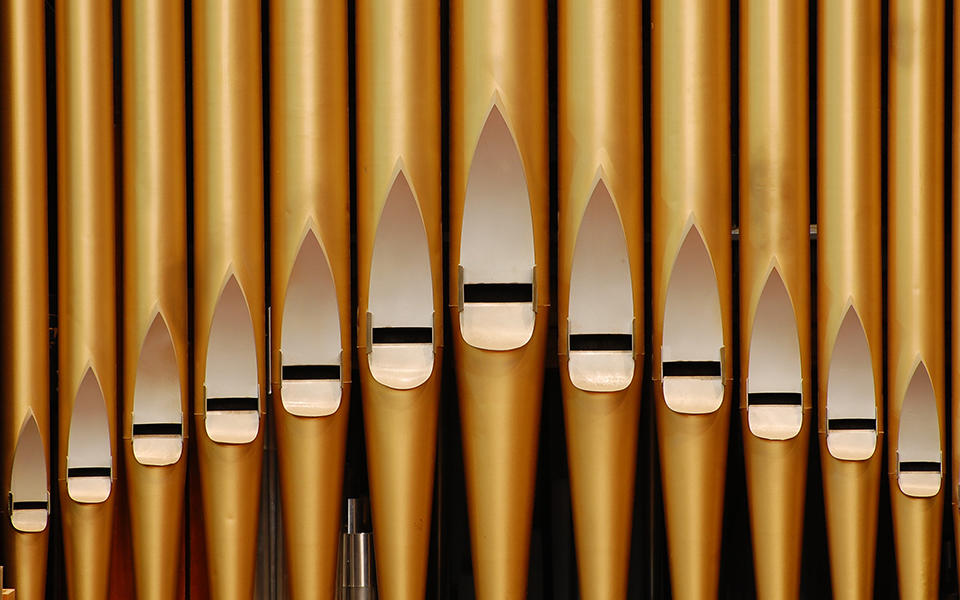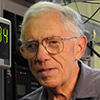Taking Measure
Just a Standard Blog

Pipes on a pipe organ.
This is part 2 in a series. Read part 1.
A short history of frequency
Frequency was originally considered to be the province of musicians. The pitches or frequencies of the notes in a musical scale are defined by ratios — octaves, for example, where the frequency of the higher note is twice the frequency of the lower one. The 12 notes between octaves in Western music are also defined by ratios — in principle the ratios of small integers, because notes that have this relationship are generally regarded as pleasing when sounded together and because these relationships arise naturally in the resonant frequencies of vibrating strings and pipes.
In the “equally tempered” musical scale, the most common tuning system in Western music, the ratio of the frequencies between consecutive notes is 21/12 or about 1.0594. An advantage of this scale is that an octave can consist of any 12 consecutive notes, but a disadvantage is that the ratio of the frequencies of notes are not exactly small integers. Pianos are often tuned to this scale, so that a piano can be played equally well (or equally poorly, depending on your perspective) in any key, that is, with an octave that begins on any note.
For example, two notes that are five notes apart — a “perfect fifth” — have an ideal frequency ratio of 1.5:1 (3:2). The note a perfect fifth above C is G (C – D – E – F – G). In the equally tempered scale, the ratio of the frequencies of these two notes is 27/12 = 1.4983 because there are seven notes between them (C – C# – D – D# – E – F – F# – G). The third note in the “major triad” starting with C is E. It is four notes above C (C – C# – D – D# – E), so that the ratio of its frequency to the frequency of C is 24/12 = 1.259. The notes C and E are separated by a “major third,” and the ideal frequency ratio is 1.25:1 (5:4). Although the frequency ratios of a perfect fifth and a major third in the equally tempered scale do not correspond to the integer ratios considered most pleasing, the ratios are the same when starting with any note as the first note in these relationships.
Since the frequencies of the notes in a musical scale are defined only by ratios, the frequency of one note, measured in cycles per second, is needed to define the frequencies of all of the other notes. Once the frequency of this “standard” note has been set, the frequencies of all of the notes in the musical scale are determined. A common choice is to define the frequency of A above middle C (in the center of a piano keyboard) as 440 cycles/second, or 440 hertz (Hz), to use the modern unit for frequency. In the equally tempered scale, the frequency of middle C is nine notes below the frequency (f) of A (A – G# – G – F# – F – E – D# – D – C# – C) so that fc = fa/29/12 = 440/1.68 = 261.6 Hz. Other definitions for the frequency of A have been used in the past. In general, composers who wrote primarily for orchestras or ensembles tended to prefer a higher value for the frequency of A, while composers who wrote for singers (operas or oratorios, as examples), tended to prefer a lower value for A.
In the equally tempered scale, the ratio of E above middle C to middle C is 1.259, so that the frequency of E would be 261.6 × 1.259 = 329.35 Hz. The ideal ratio of these two notes is 1.25 (5:4), which would give the frequency of E as 261.6 × 1.25 = 327 Hz. The average listener could probably not distinguish between these two frequencies if they were played separately, but the dissonance would be jarring if these two E’s were played together.
The frequency standards of the 16th, 17th and 18th centuries in Europe were typically church organs, and musicians typically tuned their instruments to match the frequency of the organ in the local church. The lowest (fundamental) frequency of an organ pipe of length L is approximately V/2L, when it is open at the ends. V is the speed of sound in air, about 340 meters per second (m/s, about 760 mph). To produce the note C as the fundamental note, the pipe would be about L = 340/(2 × 261) = 0.65 m, or about 25 inches long. The sound produced by an organ pipe generally also includes a number of harmonics — frequencies that are integer (whole number) multiples of the fundamental frequency.
The speed of sound in air varies with the air temperature. A change in air temperature of 6 degrees Celsius (about 11 degrees Fahrenheit) changes the speed of sound by about 1%, and this introduces a corresponding change in the sound emitted by an organ pipe. (The length of the pipe also varies with the ambient temperature, but this has a much smaller effect on the frequency emitted.) This sensitivity of frequency standards to the ambient temperature and similar effects is a typical problem with a standard that is based on a physical device. As I will discuss in a future essay, this is one of the primary advantages of a frequency standard based on the properties of an atom or molecule.
Time, time interval, and frequency
Although time and time interval were once the province of astronomy and frequency the province of musicians, there are deep and fundamental links between these parameters, and reconciling the conflicts that result from these links has proved to be very difficult, as I will discuss in future essays. The fundamental reason for the conflict is that counting the oscillations of a vibrating organ pipe (or any oscillating system) is a way of measuring elapsed time. The time at any instant is simply the elapsed time since some origin time in the past.
For example, an organ pipe that is producing the note A above middle C is generating a frequency of 440 Hz (cycles/second), and the local air pressure is oscillating at this frequency. We “hear” the note because our ears respond to this variation in the air pressure. Each of these vibrations occurs in a time interval of 1/440 seconds, so that frequency and time interval are simply the inverse of each other. Furthermore, a “musical second” could be defined as that time interval in which the note emitted by this organ pipe has 440 oscillations of the local air pressure. Since there are 60 × 60 × 24 = 86,400 seconds in a 24-hour day, a “musical day” could also be defined as that elapsed time in which the local air pressure generated by an organ pipe vibrating at the frequency of A above middle C had 440 × 86,400 oscillations.
This relationship could also be considered in the opposite sense. The note A above middle C could be defined such that the air pressure generated by an organ pipe producing this note will vary by exactly 440 × 86,400 vibrations in an astronomical day. These relationships had no practical significance in the 16th, 17th and 18th centuries because there was no simple method for comparing the “musical day” that I defined above with the astronomical day, which, as I described in my previous essay, is governed by the concept of “apparent solar time.” But a collision was coming, and addressing the consequences of this collision is still with us.
In the next essay I will discuss the basic principles of all clocks and oscillators, and this will introduce the question of how the everyday ideas of time and frequency can be reconciled.






Mr. Levine’s input on time is absolutely fascinating. I am looking forward to the next ‘essay’.